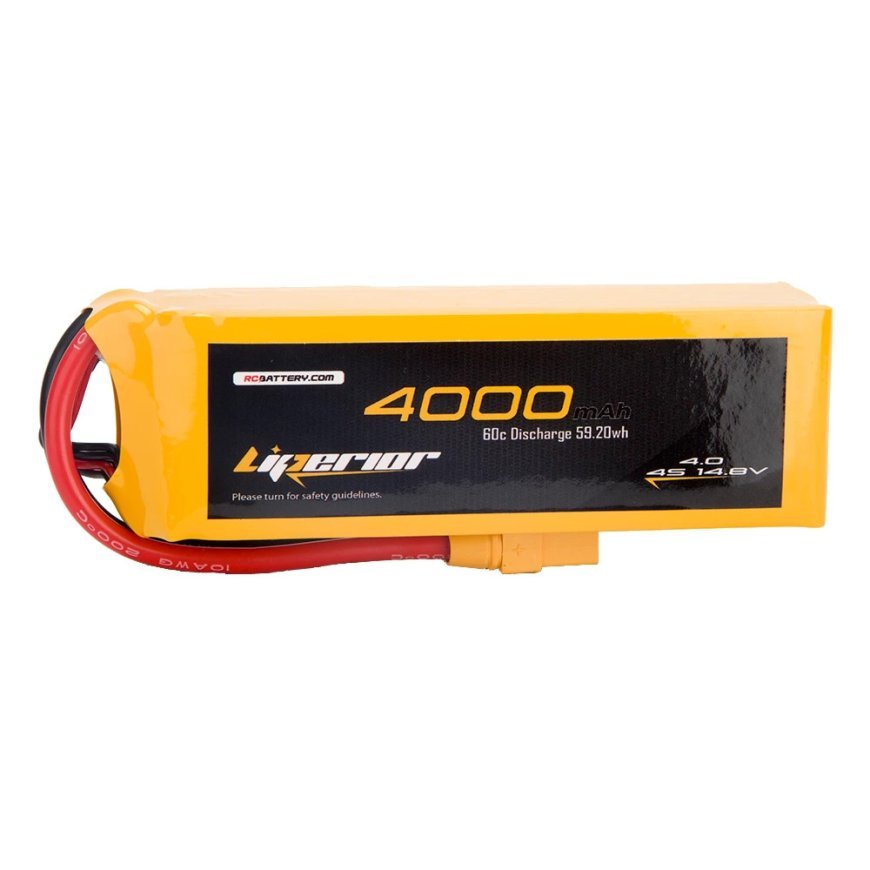Do RC LiPo Batteries Perform Differently in Cold or Hot Weather?

If you've ever noticed your RC plane struggling to stay airborne on a frosty morning or your RC car overheating under the blazing sun, you're not alone. Remote Control (RC) enthusiasts often face unexplained issues with their vehicles that boil down to one hidden factor: temperature.
Lithium Polymer (LiPo) batteries—the powerhouse behind most high-performance RC vehicles—are highly sensitive to temperature changes. The performance, safety, and lifespan of a LiPo battery can be dramatically influenced by how hot or cold the environment is. Understanding these effects is essential for every RC hobbyist who wants to get the best out of their gear while avoiding costly mistakes.
Let’s dive into the world of LiPo battery chemistry, explore how weather extremes impact performance, and uncover expert-backed solutions to protect your investment.
Understanding RC LiPo Battery Chemistry
What Are LiPo Batteries Made Of?
LiPo batteries consist of lithium-ion cells enclosed in a soft polymer casing. Each cell contains an anode, cathode, electrolyte, and separator. These components work together to store and release energy. The soft shell makes them lighter than traditional batteries but also more vulnerable to damage.
How They Generate Power
LiPo batteries operate by the movement of lithium ions from the negative to the positive electrode during discharge. This electrochemical reaction generates the voltage necessary to power your RC motor. When recharging, the ions move in the opposite direction.
Sensitivity to Environmental Conditions
The efficiency of this ion movement depends heavily on temperature. Unlike household batteries, LiPos are engineered for performance, not rugged durability. Small shifts in ambient temperature can slow ion transfer, reduce capacity, or even cause internal damage.
Cold Weather Effects on RC LiPo Batteries
Lower Voltage Output
In cold environments, LiPo batteries suffer from sluggish ion movement. This results in lower voltage output and reduces the energy available to your motor. You'll notice diminished acceleration and shorter run times.
Reduced Capacity and Shorter Run Time
At freezing temperatures, the chemical reactions inside the battery slow down. This means less power is available, even if your battery was fully charged. It may appear to discharge faster, leaving your RC vehicle underpowered.
Sluggish Performance
If you've tried operating an RC plane in 0°C (32°F) weather, you’ve likely experienced slow responsiveness and poor handling. Cold batteries deliver power inefficiently, affecting not only speed but also the performance of electronic speed controllers (ESCs) and servos.
Risks of Charging in Cold Conditions
Charging a cold LiPo battery is dangerous. Below 10°C (50°F), the lithium plating can occur—where lithium builds up on the anode instead of intercalating correctly. This leads to permanent capacity loss and increases the risk of internal short circuits.
Hot Weather Effects on RC LiPo Batteries
Accelerated Chemical Reactions
In high temperatures, chemical reactions inside the battery intensify. While this may initially provide better power output, it also increases stress on the battery’s internal components.
Thermal Runaway and Fire Hazards
Above 60°C (140°F), you’re entering dangerous territory. Excessive heat can cause thermal runaway—a chain reaction where the battery overheats and catches fire. This is a real risk if your battery sits inside a hot car or under direct sunlight.
Swelling, Puffing, and Degradation
Prolonged exposure to heat causes gas buildup within the battery, resulting in swelling or puffing. These are clear signs that the internal structure is compromised, and the battery should be retired immediately.
Impact on Voltage Stability
Hot batteries may suffer from voltage sag under load. This causes your vehicle’s performance to become erratic—fluctuating between bursts of speed and power dropouts.
Real-World Scenarios: RC Hobbyist Challenges
Cold Morning Flights with RC Planes
Many drone pilots take to the skies at dawn. However, morning dew and cold air mean the battery is operating well below its comfort zone, reducing flight time and stability.
Midday Heat on RC Tracks
Racing in the summer sun can push both your motor and battery to their thermal limits. Without proper ventilation or cool-down intervals, you're risking irreversible damage.
Seasonal Storage Errors
Storing a battery in a freezing garage or leaving it fully charged during a heatwave are both common mistakes. These conditions significantly shorten battery life.
Failure to Pre-Heat or Cool Batteries Before Use
Jumping straight into action without acclimating your battery can result in underperformance or, worse, a hazardous failure mid-session.
Best Practices: LiPo Battery Care in Cold Weather
Warm-Up Strategies
Warm your battery to room temperature before use. You can place it in an inner jacket pocket, use commercial LiPo battery warmers, or let it sit indoors for 30 minutes. Avoid microwaves or hairdryers—direct heat can cause damage.
Safe Charging Recommendations
Only charge batteries above 10°C (50°F). Most smart chargers allow you to monitor temperature—use this feature to stay safe.
Storage Tips
Store your LiPo batteries at around 50% charge in a temperature-controlled environment. Avoid leaving them in a car or shed where temperatures can plummet overnight.
During Use: Monitor Voltage Closely
Cold conditions lead to faster voltage drops. Always set voltage alarms or use telemetry to monitor battery health during use.
Best Practices: LiPo Battery Care in Hot Weather
Pre-Cooling Before Use
Before flying or racing, keep batteries in a cooler or insulated container. Don’t expose them to direct sunlight for extended periods.
Avoiding Over-Discharge and Overcurrent
High temps increase internal resistance, which can cause dangerous spikes in current. Use conservative throttle curves and avoid aggressive maneuvers if your battery feels warm.
Post-Use Cooling Protocol
After a session, allow the battery to cool naturally. Don’t charge immediately. Use a fan or shaded area to speed up the process if needed.
Heat-Resistant Storage Boxes
Store batteries in LiPo-safe bags placed inside metal or ceramic containers, especially in hot climates. Some users even store them in small coolers with ice packs nearby (not touching the battery) for added protection.
Monitoring Tools and Technology
Use of Battery Temperature Sensors
Modern RC telemetry systems include temperature sensors that alert you if the battery gets too hot. Install these if you run high-speed or high-load setups.
ESCs with Thermal Protection
Invest in electronic speed controllers that feature thermal cutoff protection. These automatically shut down your motor if temperatures exceed safe limits.
Smart Chargers with Temperature Feedback
Many smart chargers have temperature probes and allow you to customize charge settings based on ambient conditions. Always charge on a fireproof surface.
Expert Tips to Extend LiPo Battery Life
-
Never Store Fully Charged or Fully Drained: Keep storage charge between 3.7V to 3.85V per cell.
-
Use Storage Mode on Chargers: Most modern chargers have this built-in. Utilize it before storing batteries for long periods.
-
Regular Inspections for Puffing or Damage: If you see swelling, dispose of the battery safely.
-
Balance Charge Every 5–10 Cycles: This ensures cells are evenly charged and reduces wear.
Conclusion: Temperature Awareness = Battery Longevity
LiPo batteries are high-performance, high-maintenance components. Cold can make them sluggish and unsafe to charge. Heat can push them beyond their design limits, leading to failure or fire. But with a little preparation and care, you can operate safely in almost any weather condition.
Understanding how environmental factors influence battery performance is crucial not just for safety, but also for getting the most out of every flight, race, or bash session. Always respect your battery's temperature boundaries and it will reward you with power, consistency, and a long lifespan.
FAQs
Q1: Can I use an RC LiPo battery in freezing temperatures?
Yes, but with limitations. Always warm the battery to room temperature before use, and never charge it when it's below 10°C (50°F).
Q2: What is the ideal operating temperature for LiPo batteries?
Between 20°C to 30°C (68°F to 86°F) offers the safest and most efficient performance range.
Q3: What happens if I leave my LiPo battery in a hot car?
The battery may overheat, swell, or even catch fire. Always store in a temperature-controlled, ventilated location.
Q4: Do cold temperatures permanently damage LiPo batteries?
Cold alone doesn’t cause permanent damage, but using or charging them cold can. It’s best to warm them up before use.
Q5: How can I warm up a LiPo battery safely?
Use a battery warmer, an inner jacket pocket, or keep it indoors for 30 minutes before use. Avoid applying direct heat.
Q6: Can heat improve LiPo battery performance temporarily?
Yes, but it accelerates degradation and increases risk. Long-term use in hot conditions reduces overall battery life.
What's Your Reaction?

























































